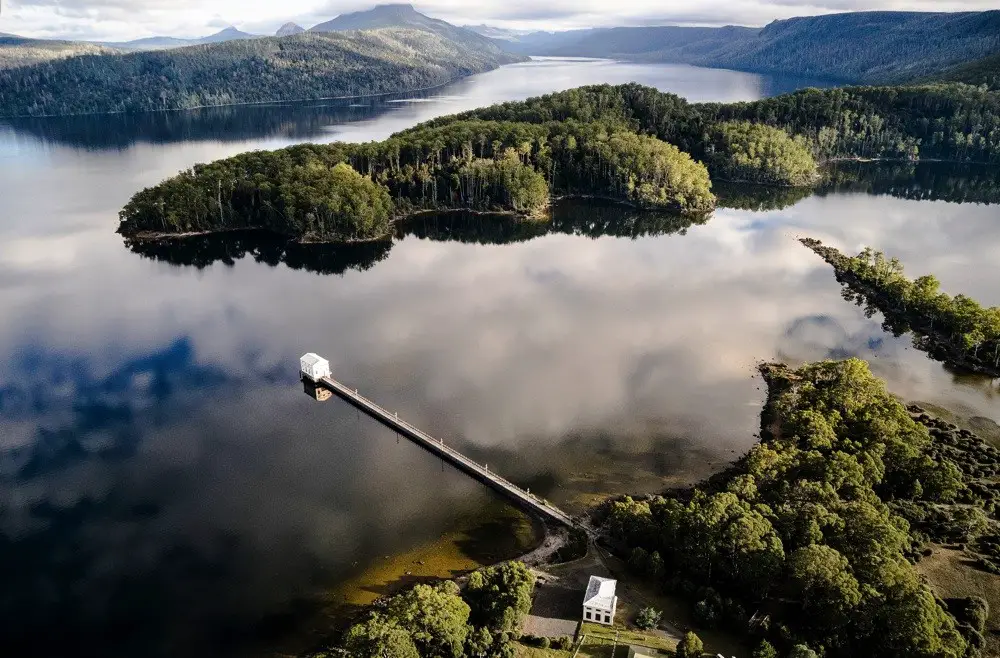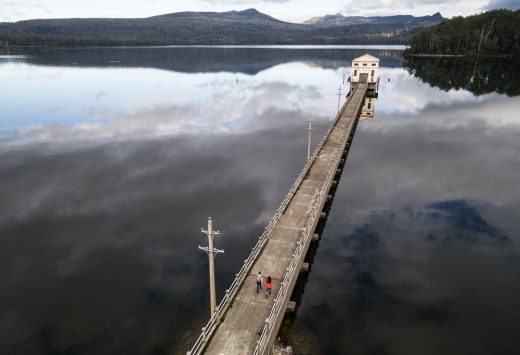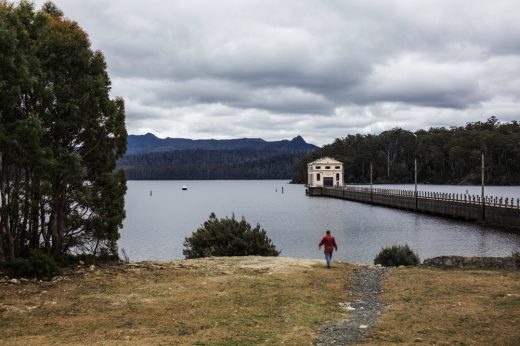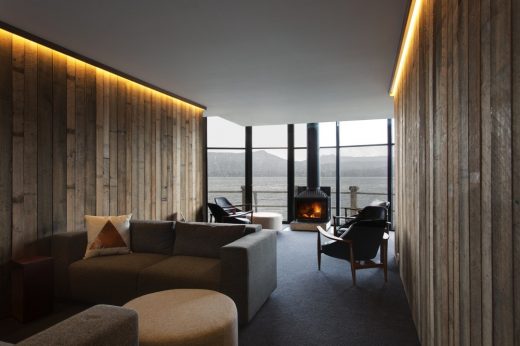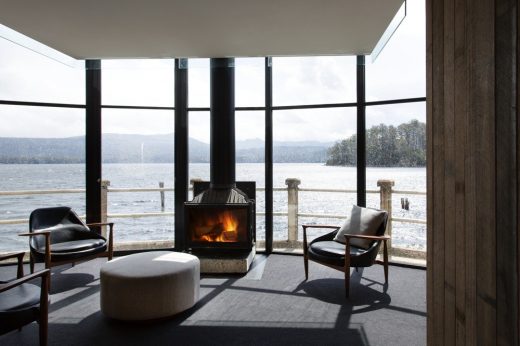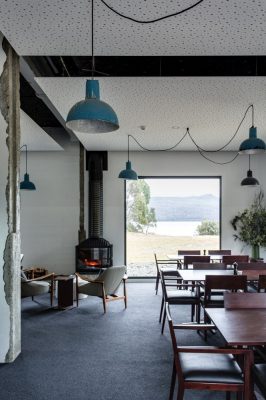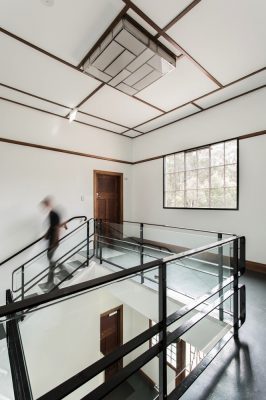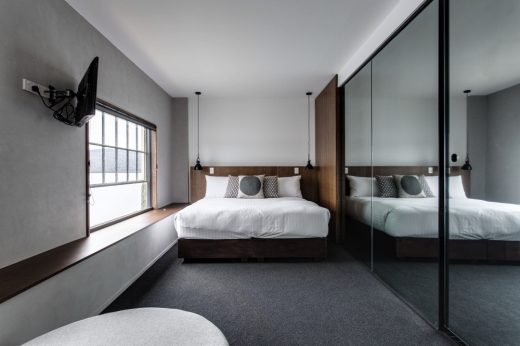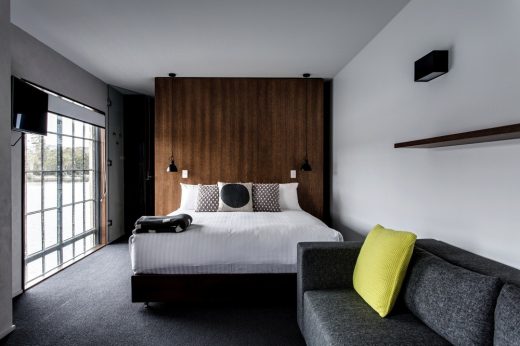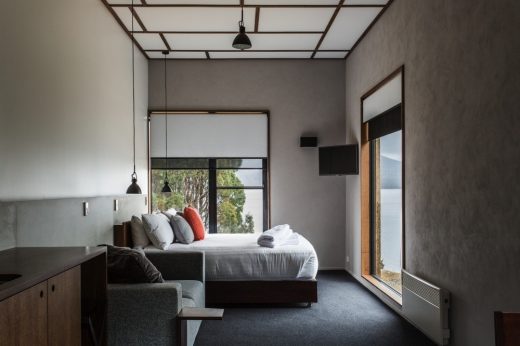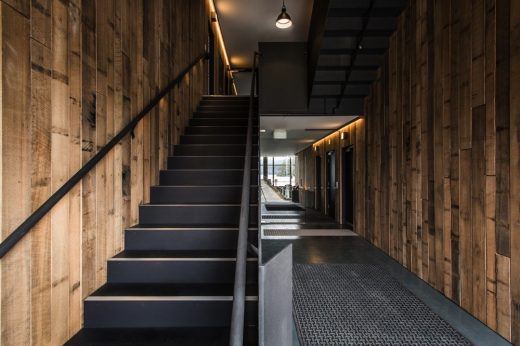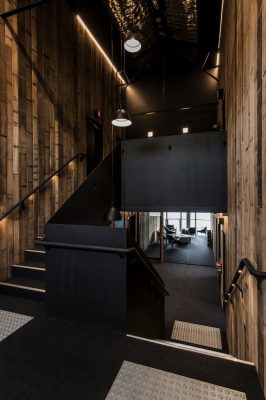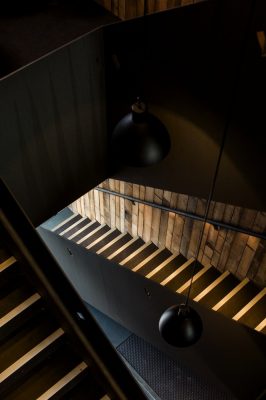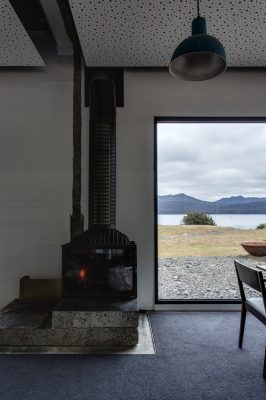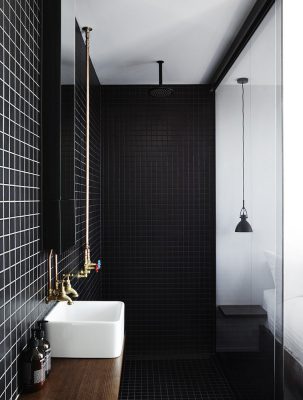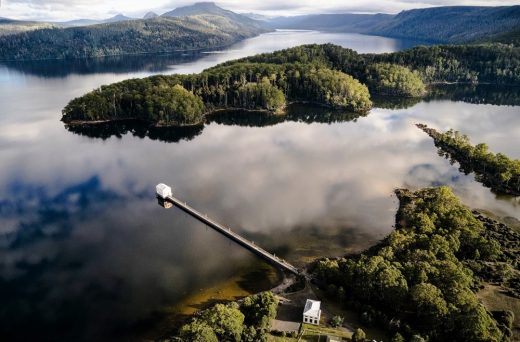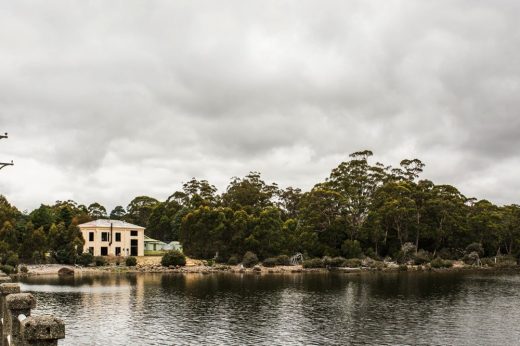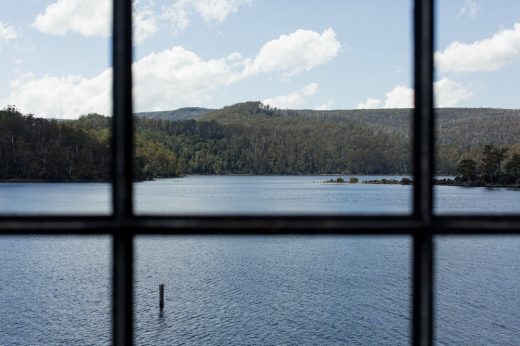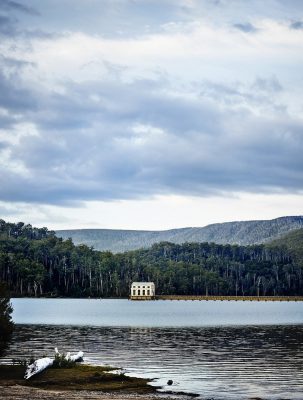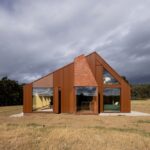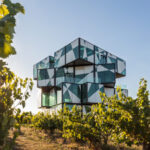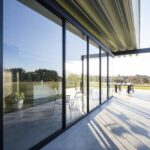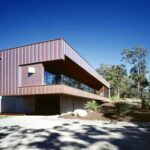Pumphouse Point Lake St Clair, Tasmanian Architecture, Australian Wilderness Retreat Images
Pumphouse Point in Tasmania
Lake St Clair Building Redevelopment design by Cumulus Architects, Australia
5 Mar 2019
Pumphouse Point at Lake St Clair
Architecture: Cumulus
Wilderness retreat in Tasmania
Location: Pumphouse Point Rd, Lake St Clair, Tasmania, Australia
Pumphouse Point in Tasmania
The project involved the adaptive reuse of Pumphouse Point into a wilderness retreat. The existing heritage listed, art-deco style buildings – ‘The Pumphouse’ and ‘The Shorehouse’ – were constructed in the 1940s as part of Tasmania’s hydro electric scheme and are positioned within the Tasmanian Wilderness World Heritage Area. The two buildings had been unused for over twenty years before works began.
Eighteen new guest suites, communal lounge areas and a shared dining area have been inserted within the existing off-form concrete building envelopes. From inception we envisaged that the Pumphouse Point redevelopment should encapsulate rugged simplicity and unrefined comfort. Through its design the new redevelopment attempts to build on the sense of arrival and place inherent in the unique location whilst alluding to the site’s history through material selection and construction detailing.
In keeping with best heritage practice and the values of the World Heritage Area in which it is located, the design is focused on environmental stewardship, sustainability and minimal site impact.
Description
Located just inside the Tasmanian Wilderness World Heritage Area, Pumphouse Point was originally constructed as part of Tasmania’s hydro electric scheme and has been unused for over twenty years before being redeveloped.
The redevelopment, which has already become a signature project for Tasmanian tourism, involved the adaptive reuse and refurbishment of two existing, heritage listed, off-form concrete art deco buildings – ‘The Pumphouse’ and ‘The Shorehouse’ – into a wilderness retreat.
The Pumphouse, a three storey building originally constructed in the 1940s to house pump turbines, sits on Lake St Clair at the end of a 250m concrete flume which is its only connection to land. The Shorehouse, located at the start of the flume on the edge of the lake, was constructed at the same time and accommodated offices and a maintenance workshop for the turbines. Eighteen new guest suites have been inserted within the existing concrete building envelopes – twelve of these are located in The Pumphouse and the remaining six are within The Shorehouse. The Shorehouse also accommodates the prep kitchen and main communal lounge / dining room.
Only minimal work has been done to the exterior of the buildings. This is a deliberate response to maintain the high heritage value of the existing buildings and to emphasise the contrast between the new interiors and the exterior – their distressed condition a testament to the harsh environment in which they are located.
The approach to The Pumphouse building, surrounded by mountains and water, heightens the anticipation and sense of arrival. Guests pass through solid metal doors into the entry foyer – an intermediate zone through which guests are brought gently into the comfort of the suites from the rawness of the wilderness outside. The twelve studio-sized suites run lengthways down the two outer wings, leaving the central core devoted to communal lounge areas on each level, open at both ends so that the sight-line that begins from the flume continues through the building.
A simple neutral palette has been used throughout in order to characterise a rugged simplicity and uncomplicated comfort into which the guests retreat. The untreated rough-sawn hardwood and exposed servicing pipework of the entry and common spaces subtly give way to more refined Tasmanian timber veneer panelling and exposed bent copper plumbing in the suites. These items also allude to the history of the place – the timber formwork of the off-form concrete and water once pumping through the core of the building.
The project has been achieved on an extremely tight budget in a remote location which required a large amount of site servicing and infrastructure. Simple construction techniques were utilised and opportunities for standardisation and prefabrication sought through joinery and fittings. Working within existing enclosures that were originally designed for very different functions, a large amount of effort was spent manipulating the internal spaces to balance private and common spaces.. Significant co-ordination was also required to ensure an efficient structural solutions that worked with the high acoustic performance required for the suites.
Environment
Although the project is located within the Tasmanian Wilderness World Heritage Area, it is not intended to overtly showcase environmental credentials or be an ‘eco-lodge’. Instead the architecture acts as a subtle backdrop to the surrounding wilderness – a retreat from which the encompassing environment can be experienced firsthand by many who would not otherwise take the opportunity.
Our overall aim was to minimise any potential impact of the redevelopment on the World Heritage Area. This approach was carried through the construction process with the builders working within an environmental management plan to carefully deal with potential contamination issues and restrict access to only the areas of the site that had previously been disturbed.
With the exception of increasing the thermal performance of the building through insulation and use of high performance glazing, minimal work was done to the building envelopes.
The relatively consistent temperature of the lake and the thermal mass of the existing concrete buildings has been utilised so that the buildings can rely on natural ventilation and only require localised space heating during winter. Rather than the approach of a traditional hotel where all spaces are air conditioned to a homogenised level, we took the approach of dividing the spaces into one of three categories – non-conditioned (entry foyers), semi-conditioned (lounges and public areas) and conditioned (guest suite) spaces. This meant that different heating strategies could be employed (eg. wood fires in public areas and panel heaters in the suites) and allowed transition zones between the outdoors and the suites.
Material and product selection is subtle in its response to environmental stewardship with natural materials favoured where possible – local Tasmanian timber used untreated and rough sawn in the public areas or as natural stained veneer in the suites and joinery in shared spaces.
Material Summary
Located on the edge of the Western Tasmania Wilderness World Heritage Area, Pumphouse Point was originally constructed as part of the Hydro Electric scheme and has been unoccupied for over twenty years before Cumulus were engaged. This project involves the adaptive reuse and refurbishment of two existing heritage listed art deco buildings on the site – The Pumphouse and The Shorehouse – into a wilderness retreat comprised of self-contained guest accommodation and communal lounge areas.
The new guest suites have been constructed within the existing off-form concrete building envelopes which are relatively un-touched externally, their distressed condition testament to the harsh environment which they occupy. There are 18 Guest suites in total. The Shorehouse houses 6 suites and the main communal lounge / dining room. The remaining suites are located in the Pumphouse which sits 250m out into Lake St Clair and is approached via a narrow concrete flume.
This approach, surrounded by mountains & water, heightens the anticipation and sense of arrival. Guests pass through solid metal doors into the entry foyer of the Pumphouse – an intermediate zone through which guests are brought gently into the comfort of the suites from the rawness of the wilderness outside. The simple neutral palette which has been used throughout characterises a rugged simplicity and unrefined comfort into which guest retreat.
In this way, the untreated off-sawn hardwood and exposed servicing pipework of the entry and common spaces subtlety give way to more refined Tasmanian timber veneer panelling and exposed bent copper plumbing in the suites. These materials also hint to the history of the place in that there is a sense that the same timber used in the original concrete formwork has been utilised in making new spaces and there is still water pumping through the building.
Pumphouse Point in Tasmania images / information from Cumulus
Location: Pumphouse Point Rd, Lake St Clair, TAS 7140, Australia
Architecture in Australia
Saffire, Tasmania, Australia
Saffire Tasmania
Australian Architect : Studio Listings
Australian Architecture – Selection
Comments / photos for the Pumphouse Point Lake St Clair page welcome

